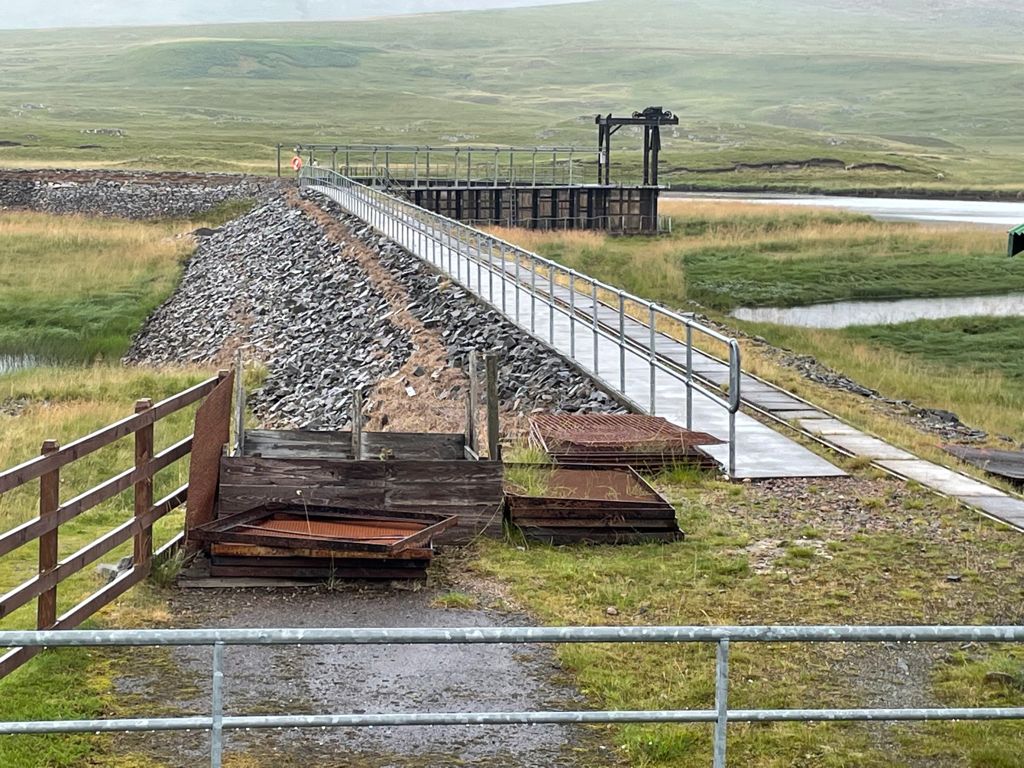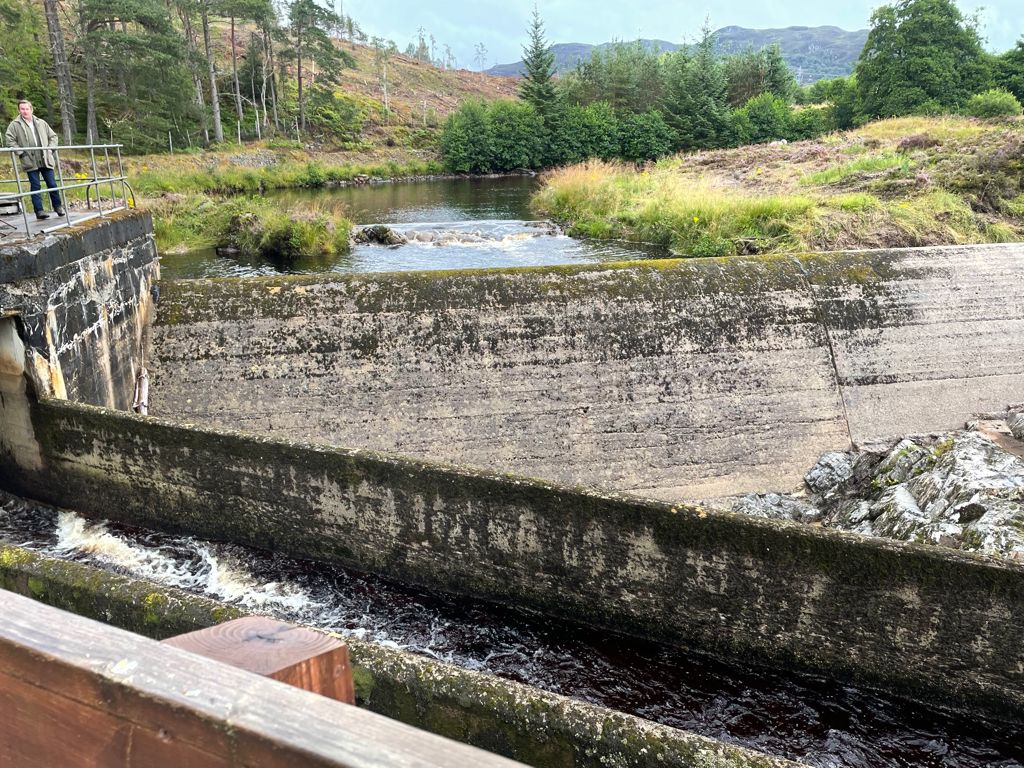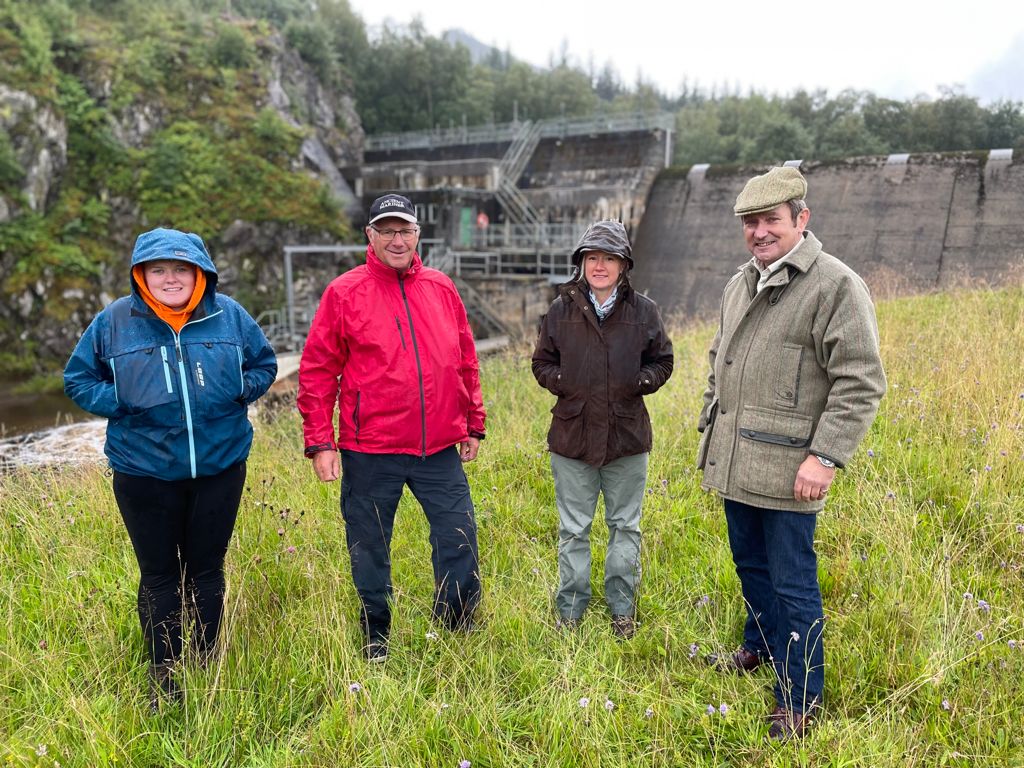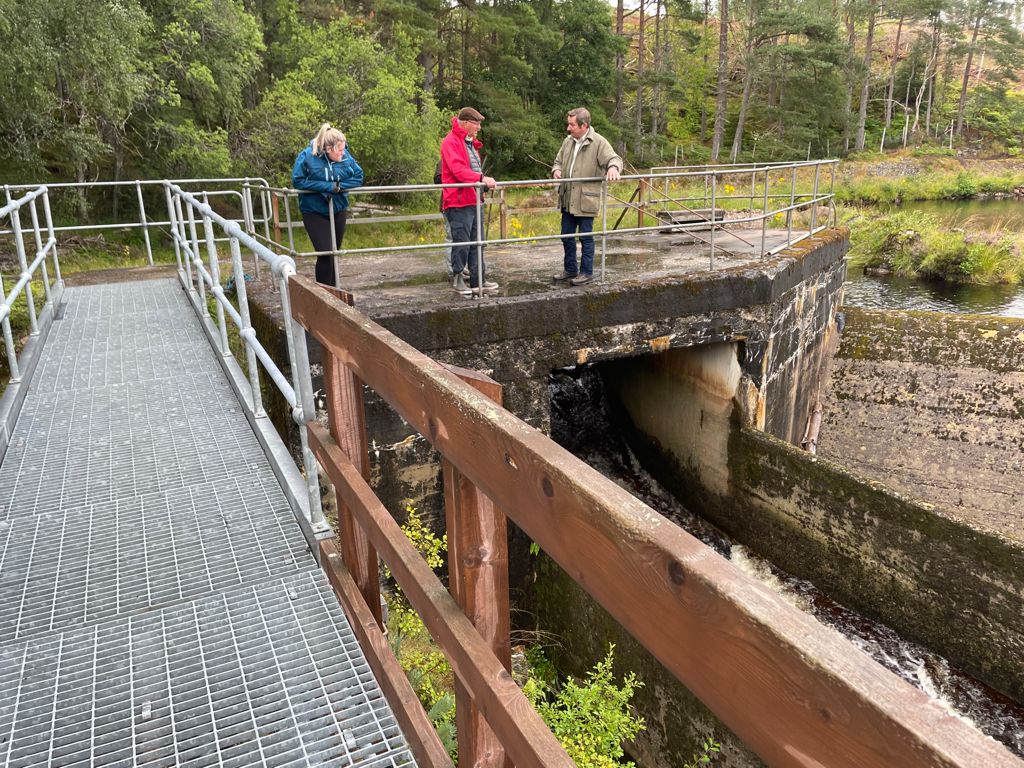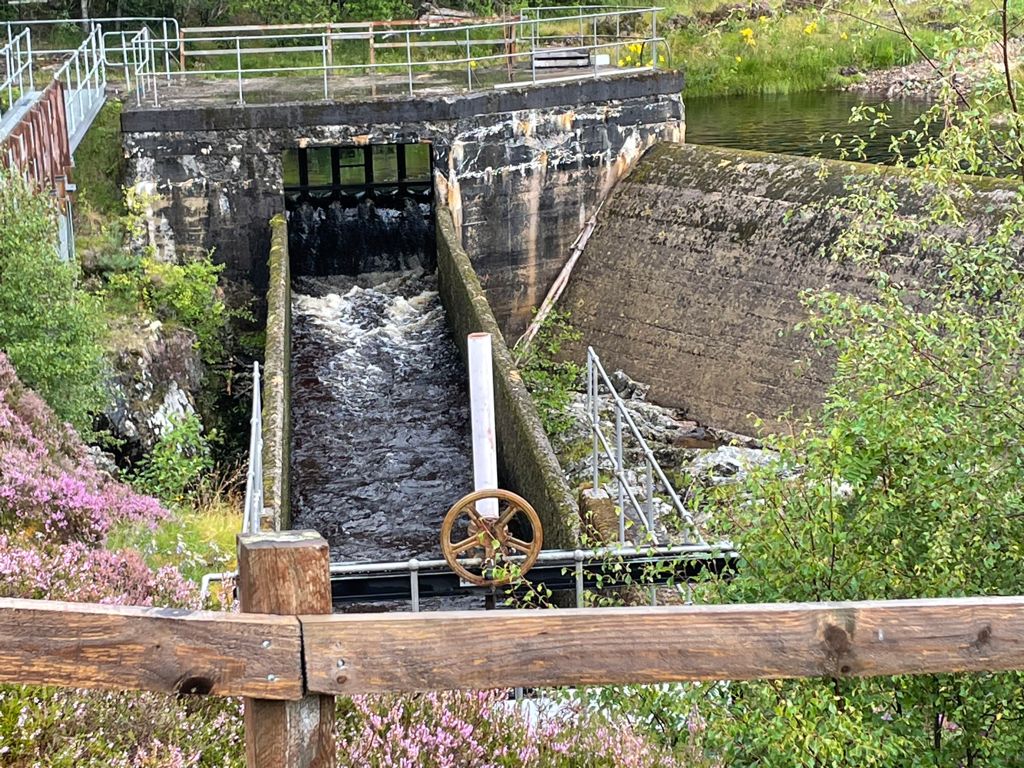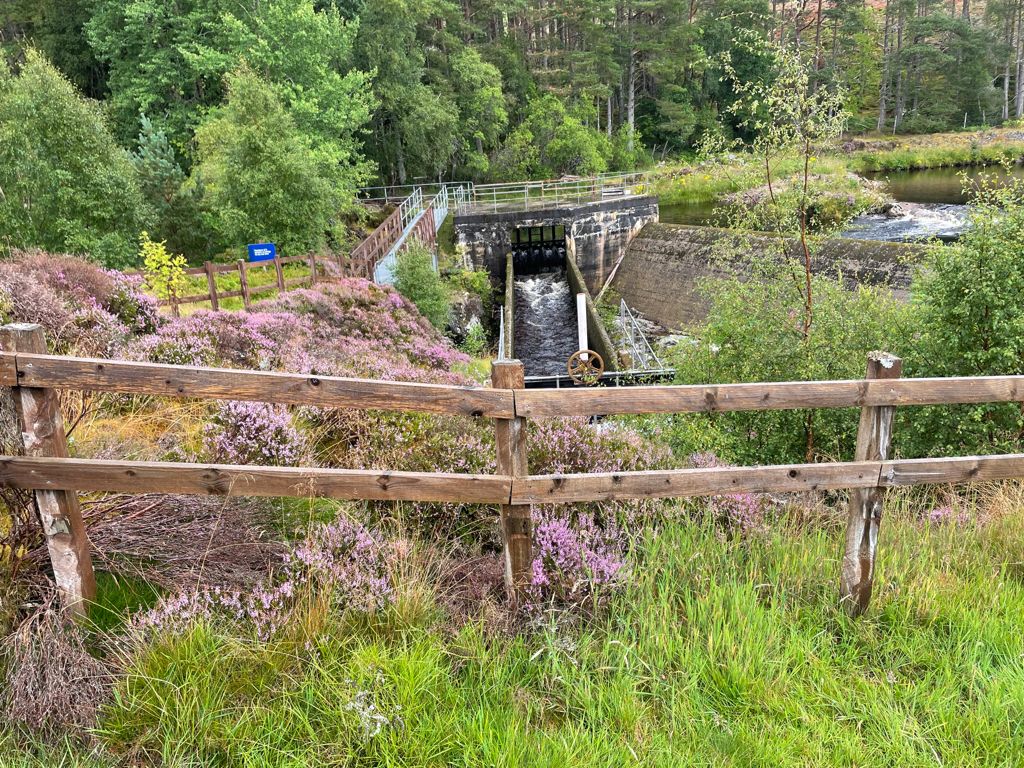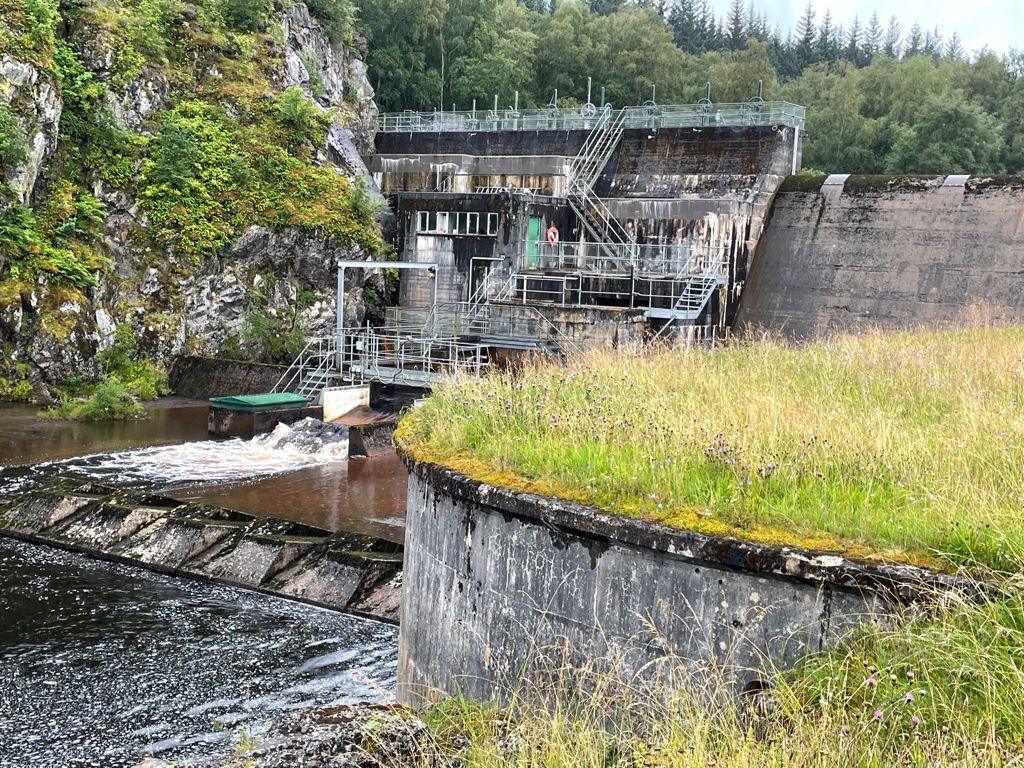Roger Knight, Spey Fishery Board Director, recently hosted a visit to Spey Dam for RSAA Committee members. The purpose of the visit was to allow members to see at first hand the problems being caused by water abstraction, particularly in the upper reaches of the river. The Spey rises at Loch Spey above Laggan, where it begins as a turbulent stream, but few people realise that its downward passage is then blocked by Spey Dam, where approximately 80% of the available flow from the top 12 miles of the river, is taken off as part of the Fort William hydroelectric/ aluminium smelter operation owned by the Gupta Family Group. The water is diverted down a canal like structure known as the Crunachden Cut to Loch Crunachden, from where it passes through a tunnel and into Loch Laggan and then down to Fort William.

As well as water abstraction by the distilleries, SSE take significant amounts from the Rivers Tromie and Truim, both significant tributaries of the Spey, into the Tummel and Tay catchment area for hydroelectric generation.
What does this mean? Effectively, the natural flow of the river is reduced by 24% at Boat O’Brig, and by 61% at Kingussie. While climate change, predation and other factors will no doubt have an impact on numbers of salmon returning and successfully spawning, clearly water abstraction in these volumes is having a major detrimental impact on the health of the river. Spey Dam, constructed in the 1940s, has been categorised as a barrier to fish passage by SEPA, with very few, if any fish ascending the poorly designed fish ladder. Indeed, monitoring by Spey Board staff continue to show very low numbers of salmon fry at sites electro-fished above Spey Dam, where the flows are insufficient to encourage salmon to ascend or to allow salmon smolts to descend below it.
A further problem is that barriers placed on other tributaries, such as the River Markie, to prevent gravel deposits building up behind the dam, effectively prevent any fish from running up them. Other problems include the silting of spawning beds below the dam and a reduction in the river’s ability to store groundwater in its gravel due to consistently low water levels.
The Scottish Government’s River Basin Management Plan is due to be revised this year, and under an EU Water Framework Directive, the river must be left in a “good ecological state” by 2027, with improvements in place by 2024.
The RSAA wrote recently to Richard Lochhead, MSP, to ensure that SEPA will secure the necessary improvements to the fish ladder, under the regulations which govern the CAR (Controlled Activities Licence) held by Gupta. Richard Lochhead contacted SEPA on our behalf and asked for an update on the situation. SEPA responded that in the case of Spey Dam … ” we are working on securing this improvement by October this year.” This would be a good step forward- but removal of the dam altogether, to be replaced by more efficient forms of renewable energy, would be the ideal solution.
Our photographs show Spey Dam; the heck across the River Markie; the Crunachden Cut; and an impoundment on the River Mashie near Newtonmore- another Spey tributary where all but a trickle of water is abstracted for hydro –electric power generation.

